Deconstruction Effort Is Underway
After a year of false starts by the city, a $1.2 million, 50-home effort is underway.
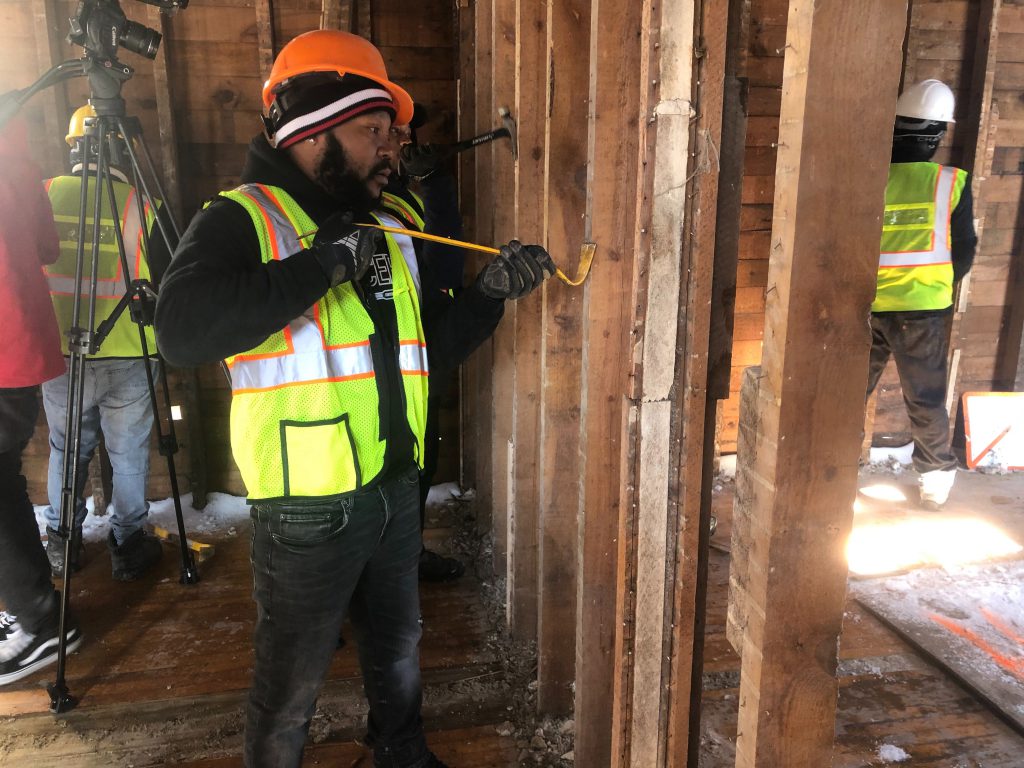
A crew member from Spencer Renovation & Construction demonstrates deconstruction work. Photo by Jeramey Jannene.
One would be hard pressed to call it glamorous, but a city program that is designed to eliminate blight, create jobs and help the environment is underway.
Spencer Renovation & Construction is deconstructing the first of 50 homes as part of a $1.2 million contract.
Common Council members Robert Bauman, Milele A. Coggs and Russell W. Stamper, II and Spencer Renovation founder Billy Spencer held a press conference Thursday morning inside the shell of a two-story duplex at 3041 N. 6th St.
A crew of up to 10 people is working on the house to take it apart piece by piece. Now gone from the home, built in 1897 according to city records, is the entire second floor alongside any interior fixtures. Wood is sorted in the rear of the property by type awaiting resale. If not for the holes in the floor and aged wood one could be convinced the house was being built, not deconstructed.
“Milwaukee is proud today that we are doing what a city should be doing and that’s providing opportunity,” said Stamper.
Bauman, the program’s champion, said deconstruction takes 10 times the work hours of mechanical demolition and that’s where the opportunity is created. Those work hours create employment for city residents and they also create a stream of reusable materials, including hard-to-find old-growth timber. He estimated that as the supply chain of materials becomes reliable the price to deconstruct homes will fall to equal that of demolition.
Billy Spencer, standing in front of his construction crew, said he’s already seeing demand for the materials he can’t meet. He said he’s working with Home Depot, Bliffert Lumber and 10 contractors to provide them with various lumber products from white pine to maple flooring. Another contractor from Minnesota intends to come pick up materials after Spencer has completed five homes.
Spencer estimated that the N. 6th St. house would yield between $5,000 to $15,000 in revenue. The hope by Bauman and others is that Spencer and others will lower their bids through competition as the value of materials goes up, offsetting the labor cost.
Each house takes approximately eight days to deconstruct for a crew of eight to 10 workers said the deconstruction veteran. He’s spent the last eight years performing deconstruction work for the Milwaukee Metropolitan Sewerage District and other non-profit organizations.
The goal is that up to 80 percent of the home will be diverted from the landfill, said Spencer.
Spencer is on schedule to clear the first batch of 50 city-owned homes by April 2020.
Photos
Deconstruction’s Long Road
Getting to this point hasn’t been easy for the city.
The Milwaukee Common Council approved a deconstruction ordinance in late 2017, requiring that buildings being taken down that were built in 1929 or before be deconstructed, as opposed to mechanically demolished with heavy equipment, and that materials be salvaged instead being sent to the dump. The ordinance applied to both the city and private citizens seeking demolition permits.
But after a few pilot deconstructions, the Department of Neighborhood Services (DNS) reported it was receiving high-ticket bids for as much as $60,000 per home and a backlog of buildings to be razed was growing.
In January council members Milele A. Coggs and Russell W. Stamper, II, the two council members with the largest number of homes slated for demolition in their district, introduced a resolution that suspended the deconstruction ordinance until March 2020 and required DNS to develop a team in-house or contract with an outside vendor to develop the capacity to utilize the $1.2 million the council allocated specifically for deconstruction.
And in April, Spencer was before the Zoning, Neighborhoods & Development Committee and expected to begin work shortly on deconstructing 50 homes. But that didn’t happen.
Spencer, an African-American, told the council he would employ a number of ex-offenders, provide job training and knew the value of the materials. Bauman, in April, praised Spencer and DNS. But that changed come October with no homes having been deconstructed.
“It took months for that contractor to obtain proof of insurance and bonding,” said interim DNS Commissioner Thomas G. Mishefske.
“He tells a different story,” said Bauman of Spencer and the delays. The alderman has long claimed Mayor Tom Barrett and other department heads want to repeal the deconstruction ordinance. “It’s a constant roadblock instead of saying ‘let’s walk you through this system’.”
As of October, the city had 461 properties subject to a raze order, everything from city-owned single-family homes to privately-owned Northridge Mall, but has only demolished 44 properties this year.
Some properties can spend over five years on the raze list, including the one Spencer is currently working on. DNS records show a condemnation case being opened on September 16th, 2014. The city acquired the home through property tax foreclosure in 2011.
“We are appropriating all this money for the purpose of blight elimination and no one seems to want to eliminate any blight,” said Bauman in October of the $2.8 million demolition and deconstruction budget. “It’s paper shuffling, it’s logjams with paperwork that’s allowing all these properties to stand, which fuels blight, which fuels neighborhood complaints, which fuels alderpersons to say ‘just tear everything down,’ but you’re not even doing that.”
“I am not satisfied with the number either,” said Coggs.
After the Wrecking Crew
What comes after the lots are cleared?
Spencer doesn’t want the empty lots his team is creating to be around for long. “All the open land we are creating we want to put houses back on,” said Spencer.
If you think stories like this are important, become a member of Urban Milwaukee and help support real, independent journalism. Plus you get some cool added benefits.
More about the Deconstruction Ordinance
- Bauman Wins Preservation Funding By Sacrificing Deconstruction Funds - Jeramey Jannene - Feb 7th, 2025
- Amendment Would Shift Money From Demolishing Homes To Fixing Them - Jeramey Jannene - Oct 23rd, 2024
- Tentative Deal Would Salvage Milwaukee’s Deconstruction Program - Jeramey Jannene - Oct 25th, 2023
- Eyes on Milwaukee: Deconstruction Ordinance Again Suspended - Jeramey Jannene - Mar 17th, 2023
- Eyes on Milwaukee: Deconstruction Program Suspended Again - Jeramey Jannene - Feb 14th, 2022
- Eyes on Milwaukee: Deconstruction Policy Remains, Well… Deconstructed - Jeramey Jannene - Dec 13th, 2021
- Eyes on Milwaukee: New Deconstruction Firm Makes Progress - Jeramey Jannene - Feb 2nd, 2021
- Eyes on Milwaukee: City Hires New Deconstruction Contractor - Jeramey Jannene - Oct 12th, 2020
- Eyes on Milwaukee: City Moves to Fire Deconstruction Firm - Jeramey Jannene - Mar 2nd, 2020
- Eyes on Milwaukee: Deconstruction Contractor Delaying Work - Jeramey Jannene - Jan 27th, 2020
Read more about Deconstruction Ordinance here
Political Contributions Tracker
Displaying political contributions between people mentioned in this story. Learn more.
- June 9, 2018 - Tom Barrett received $100 from Thomas G. Mishefske
- March 16, 2016 - Tom Barrett received $200 from Thomas G. Mishefske
Eyes on Milwaukee
-
Church, Cupid Partner On Affordable Housing
 Dec 4th, 2023 by Jeramey Jannene
Dec 4th, 2023 by Jeramey Jannene
-
Downtown Building Sells For Nearly Twice Its Assessed Value
 Nov 12th, 2023 by Jeramey Jannene
Nov 12th, 2023 by Jeramey Jannene
-
Immigration Office Moving To 310W Building
 Oct 25th, 2023 by Jeramey Jannene
Oct 25th, 2023 by Jeramey Jannene


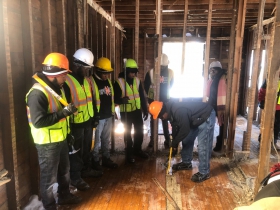
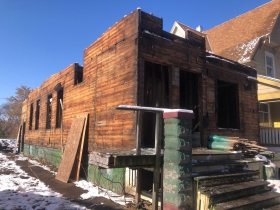
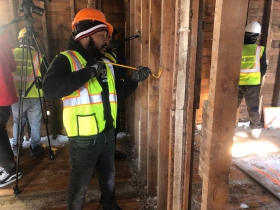
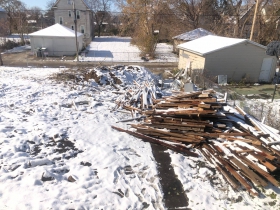
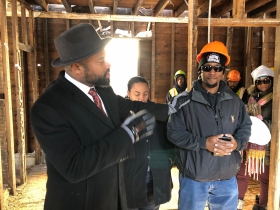
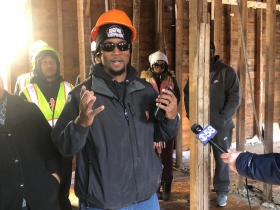

















It would be easy to underestimate the importance of this story and what is being done here. From an environmental, economic development and community development standpoint, this is a first step along the path toward the future, that being a circular economy. Right now, our economy proceeds from design to produce to market to sell, to use, and then dispose of. In a circular economy, as Mr. Spencer and his group are demonstrating, the last stage is not disposal, but re-use and re-purposing. None of this is going to be simple. In some cases, markets will have to be developed to make these businesses viable, even with public subsidies. But, what what we see in these pictures is the future.